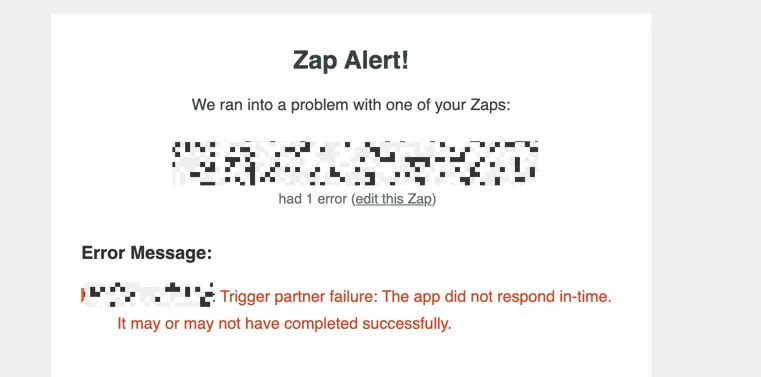Testing trigger in Zap editor
Constraint
When a user clicks Test Trigger in the Zap editor, the output of yourperform (polling) or performList (REST Hook) must be returned within 30 seconds.
Errors user will see if constraint is hit
- “The app did not respond in-time. It may or may not have completed successfully.”
- “Problem creating Sample: Our computers ran into a problem”
- “We couldn’t find any more x. Create a new x in your account and try again.”
Best practice
The Zap editor will only process three new records at a time for sample data, so one way of speeding up the response is by limiting returned results to three records when a trigger is tested. To determine when the request is for sample data, use the bundle meta parameterbundle.meta.isLoadingSample. When that is set to true, the user is testing in the Zap editor, and your integration can respond with a limited payload. More on bundle.meta properties here.
Trigger runs in a Zap
Constraint
Each time a Zap executes, the trigger’sperform method must finish processing in 30 seconds. Polling triggers run on an interval based on a user’s Zapier plan (between 1 and 15 minutes). REST Hook triggers run on an inbound POST to their subscription URL.
Errors user will see if constraint is hit
-
User will receive an email with an error message, usually with “Trigger partner failure” in the message text. An example of the email sent when the trigger errors due to a timeout:

Best practices
- For polling triggers, if your API endpoint supports request filtering around number of records or datetime, use these to reduce the number of records returned
- For both types of triggers, optimize the
performscripting for manipulating the payload - Use console logging efficiently. It can help you determine where issues might lie, but too much console logging can cause timeouts due to logging overhead.
- If you have multiple requests per record that are causing timeouts, use the Zapier platform dehydration functions. Instead of making the request immediately, a dehydration pointer is created, and the request will only be made if the Zap needs a hydrated property in a later step.
Need help? Tell us about your problem and we’ll connect you with the right resource or contact support.